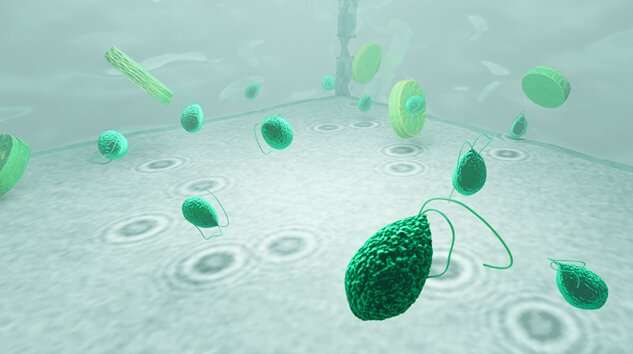Holographic microscopy provides insights into the life of microplankton

Using holograms created in digital microscopes and interpreted using artificial intelligence (AI), researchers can now follow the lives of microplankton at the individual level for the first time. The method is the result of an interdisciplinary research project at the University of Gothenburg.
Plankton are one of the most important organisms on Earth. More than half of all the world's oxygen is produced by phytoplankton in the oceans. Yet knowledge about these lifeforms is limited, mainly due to their size.
"Until now I had to study microplankton at the group level, but thanks to this new AI based holographic microscope I can see how individual microplanktons move, eat, grow and reproduce," says Erik Selander, marine biologist at the University of Gothenburg.
The only way to study microplankton at the individual level
Erik Selander heard Giovanni Volpe, Professor in Physics at the University, spoke at a previous conference about the new technique where light refracted through a particle creates a hologram that can be studied instead of the particle. Using AI, the holograms can be analyzed at much higher speeds providing more and finer details. Selander and Volpe then started an interdisciplinary project that targeted microplankton.
"We have a good understanding of who eats who, and where they go in the case of larger organisms such as animals and birds that we see every day. The method we have developed is the only one that works to study microscopic organisms at the individual level," says Giovanni Volpe.
AI makes the method much faster
The method uses LED light to analyze microplankton in holographic microscopes and this ensures that the organisms remain unaffected during the process. This discovery has been reported in the journal eLife.
"The microplankton cells we examine are only a few hundredths of a millimeter in size. But they are so numerous that they affect the entire carbon cycle of the ocean. In total, single cell microplankton take up about three times as much carbon as we humans emit from fossil fuels. Now we are able to get a detailed understanding of these processes at the individual level," says Erik Selander.
The method of recording light-matter interaction through digital cameras with the help of a holographic microscope has been well studied in the past. But thanks to digital technology and the recent AI revolution, this method has become far more useful and the analysis is easier and much faster.
"By combining holographic microscopy with AI, now we can simultaneously monitor what is happening with a large collection of microplankton cells at a single cell-level, which was a challenge before. Though the technique is demonstrated with marine microorganisms, it is quite universal in approach and can be applied to any microscopic lifeform," says Harshith Bachimanchi, doctoral student in physics at the University of Gothenburg.
"And by enclosing the cells in miniatured glass wells, we can follow the growth dynamics and swimming behaviors of cells, throughout their life cycle from hours to days,"
Holographic microscopy also offers a fast and inexpensive method for counting, weighing and sizing cells, or other particles, in a solution.
More information: Harshith Bachimanchi et al, Microplankton life histories revealed by holographic microscopy and deep learning, eLife (2022). DOI: 10.7554/eLife.79760
Journal information: eLife
Provided by University of Gothenburg


















